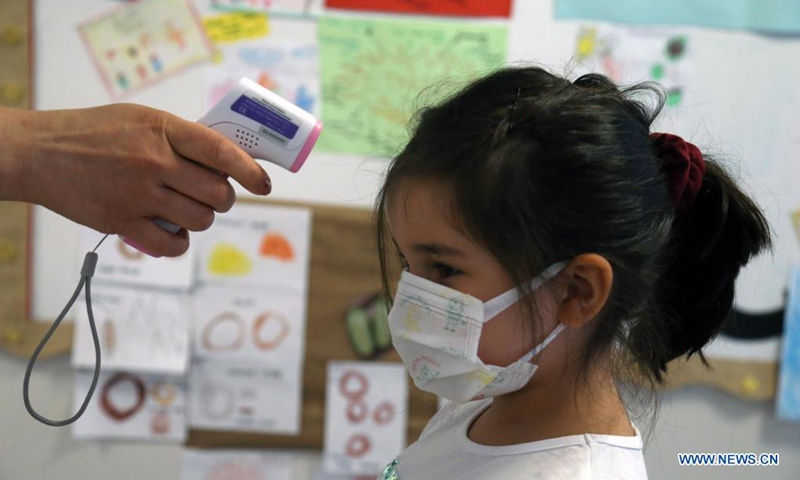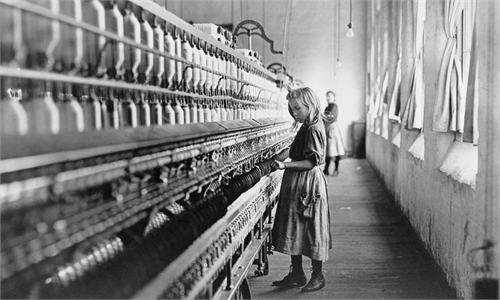Child labor sees significant jump
Impoverished families in urgent need of help: UN report

A child has her temperature checked at a kindergarten in Ankara, Turkey, on June 1, 2021. Turkey entered a new stage on Tuesday in the fight against COVID-19 after the government further eased the anti-coronavirus restrictions. The weekend lockdown was lifted on Saturdays, and weekday night curfews were postponed by an hour. Restaurants and cafes, and sports facilities also became operational with a limited number of guests.(Photo: Xinhua)
The world has marked the first rise in child labor in two decades and the coronavirus crisis threatens to push millions more youngsters toward the same fate, the United Nations (UN) said Thursday.
In a joint report, the International Labour Organization and the UN children's agency UNICEF said the number in child labor stood at 160 million at the start of 2020 - an increase of 8.4 million in four years.
The hike began before the pandemic hit and marks a dramatic reversal of a downward trend that had seen child labor numbers shrink by 94 million between year 2000 and 2016, it said.
Just as the COVID-19 crisis was beginning to pick up steam, nearly one in 10 children globally were stuck in child labor, with sub-Saharan Africa the worst affected.
While the percentage of children in child labor remained the same as in 2016, population growth meant that the numbers rose significantly.
They warned that unless urgent action is taken to help ballooning numbers of families plunging into poverty, nearly 50 million more kids could be forced into child labor over the next two years.
"We are losing ground in the fight to end child labor," UNICEF chief Henrietta Fore told reporters, stressing that "the COVID-19 crisis is making a bad situation even worse."
"Now, well into a second year of global lockdowns, school closures, economic disruptions, and shrinking national budgets, families are forced to make heart-breaking choices."
If the latest projections of poverty increases due to the pandemic materialize, another 9 million children will be pushed into child labor by the end of 2022, the report said.
But statistic modeling shows that number could potentially be more than five times higher, according to UNICEF statistics specialist Claudia Cappa, who co-authored the report.
"If social protection coverage slips from the current levels... as a result of austerity measures and other factors, the number of children falling into child labor can go up [an additional] 46 million" by the end of 2022, she told AFP.
The report, which is published every four years, showed that children aged between 5 and 11 accounted for over half of the global figure.
Boys were significantly more likely to be affected, accounting for 97 of the 160 million children toiling in child labor at the start of 2020.
But the gender gap narrows by half when household chores performed for at least 21 hours per week are counted, the report said.
Particularly concerning, perhaps, was the significant increase seen in children between the ages of 5 and 17 who are doing so-called hazardous work, which is deemed to affect a child's development, education or health.
AFP


